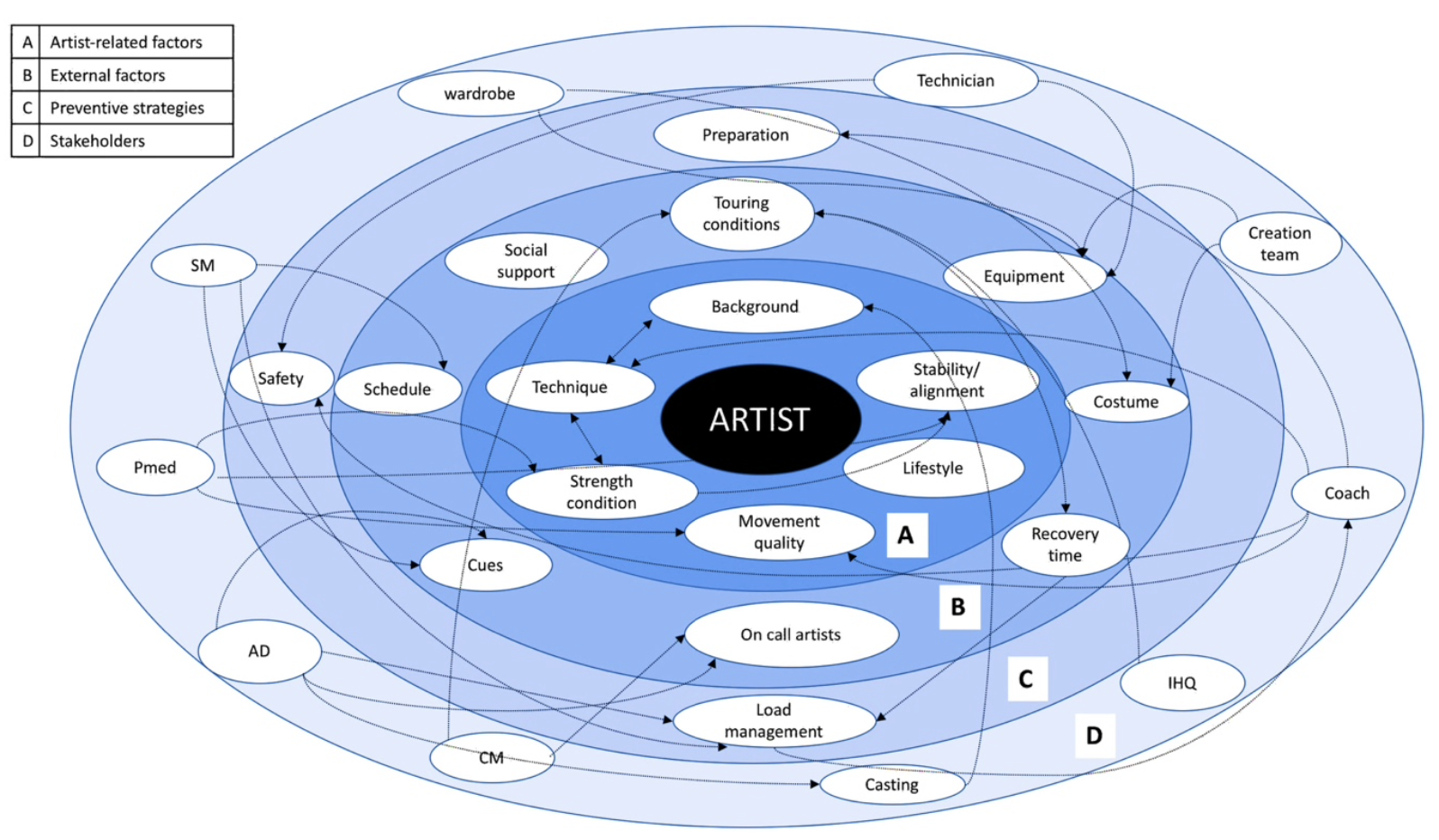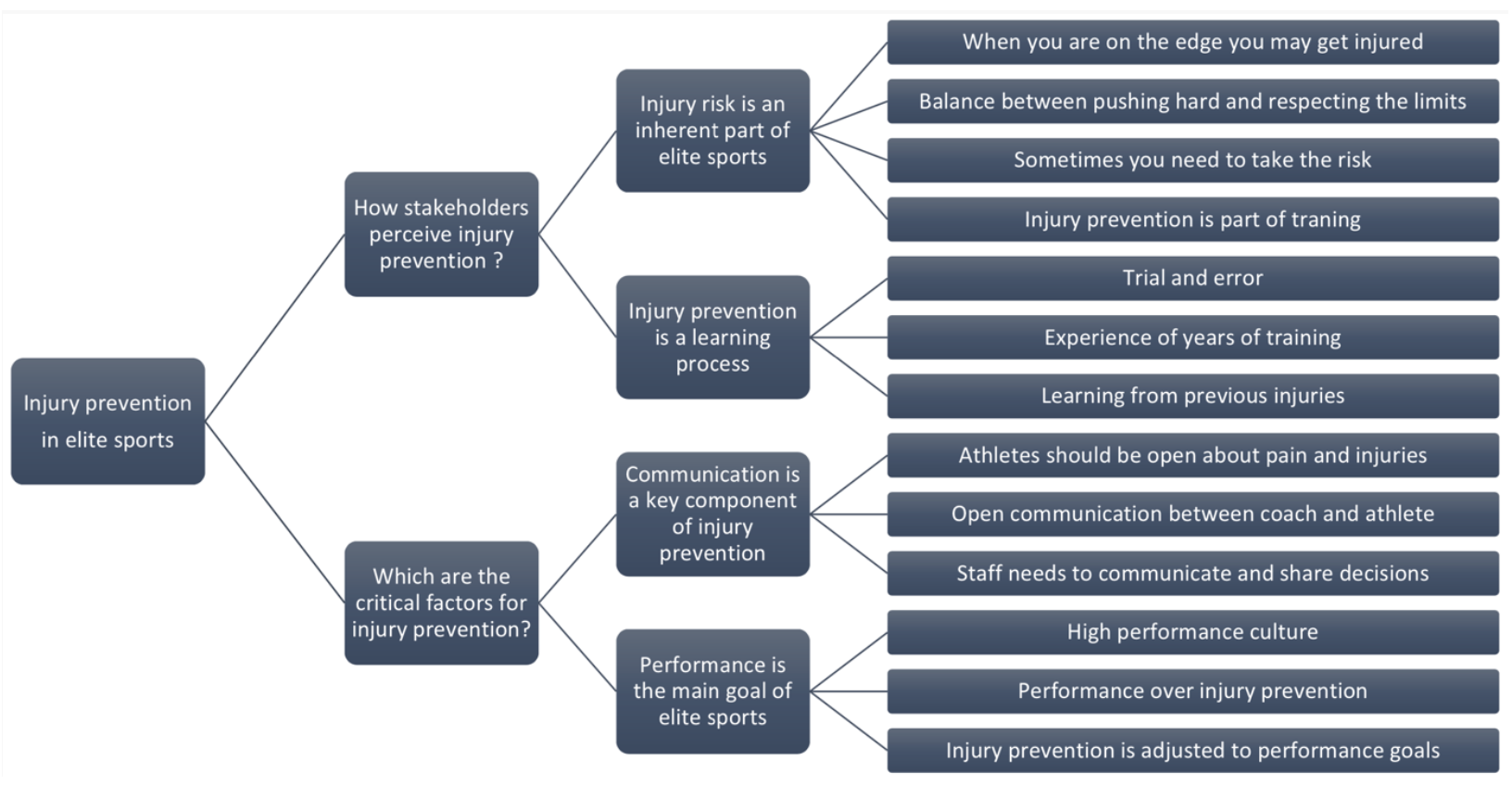Another thesis that is approved and about to be defended before the committee. Caroline Bolling gave voice to athletes and artists in her work entitled “Who Me? I thought you would never ask!” in which she applied qualitative methods in sports injury prevention research. You may have seen some of her work already floating around Social Media where it was picked up by several clinical colleagues.
Please find below the summary of her thesis. For a full read het thesis can be downloaded via this link (9.3 Mb).
Sports injury prevention at a crossroad
Sports injuries have an impact on athletes health, as well as on their performance. To overcome the problem of sports injuries researchers have developed injury prevention strategies to reduce the risk of injuries in sports. Sports injury prevention is a relatively new field that has evolved over the last 30 years. Most of the prevention measures described in the literature have been following the ‘Sequence of Prevention’, that was proposed by Van Mechelen and colleagues. The current evidence shows that it is possible to prevent sports injuries. Unfortunately, the demonstrated efficacy and effectiveness of injury prevention approaches have not translated into lasting real-world effects. Additionally, contemporary ideas indicate that a sports injury should be viewed through the lenses of complexity and should avoid a reductionist view that questions only whether an intervention works. The lack of uptake of the ‘proven’ effective interventions in sports injury prevention and the acknowledgement of sports injury as a complex phenomenon reveal the relevance to understand the context where sports injuries occur.
We need to ask new questions
To date, epidemiological studies have addressed questions of prevalence, efficacy causation, and effectiveness. However, new questions arise if we want to understand the athlete’s context: “How does the context influences injury?”, “How does the athlete perceive an injury?”, “How does the athlete deals with prevention?”, and “How different are the stakeholders’ views regarding injury prevention?” For those questions to be answered we need different methods, i.e. qualitative research methods. Qualitative methods are becoming increasingly prevalent in medical and related research, and they can help us to understand the context of the sports injuries through the perspectives of the main actors involved on the sports field, i.e. athletes and stakeholders.
Applying qualitative methods to understand the sports injury in context
This thesis aimed to explore by means of qualitative research how injury prevention is executed in practice, and to describe the perspectives of various stakeholders with regard to sports injury and its prevention. This thesis describes research in 3 different high-performance contexts, i.e. elite sports, professional dancers and circus artists.
A socio-ecological view of sports injuries which includes context at multiple levels, i.e. individual, socio-cultural and environmental.
Chapter 2: Context matters revisiting the first step of the ‘Sequence of Prevention’ of Sports Injury
This chapter is a narrative review on the first step of the Sequence of Prevention, introducing the context as part of the sports injury problem definition. It proposes a novel approach to the Sequence of Prevention that aligns with contemporary views of sports injury prevention. Thereafter, from the perspective of the socio-ecological model, we suggest to take into account the complex nature of sports injuries in the first step. In this chapter methods are proposed to explore the context in which injuries occur. Hence, this chapter is a theoretical piece that recommends an alternative approach to explore and understand the injury context through qualitative research methods.
In the past 25 years the ‘sequence of prevention’ of sports injuries has been mostly applied to produce context-free evidence, i.e. describing the problem and following the steps in controlled environments that did not consider the context as part of the problem from the outset. Contemporary views demand the ‘sequence of prevention’ to be context-driven which will provide a more comprehensive view of the injury problem and effective solutions.
Chapter 3: How elite athletes, coaches, and physiotherapists perceive a sports injury.
This chapter defines a sports injury from the perspectives of the main stakeholders in elite sport. As the first step of the ‘Sequence of Prevention’ proposes to describe the injury problem, this chapter helps to understand if the current theoretical sports injury definitions reported in the literature, align with the perspectives of athletes, coaches, and physiotherapists. The chapter describes also how the elite sport context is related to the athlete’s perception of injury. Hereafter, we propose a new way of thinking about sports injury as the end-result of an interaction between the athletes and their specific context. We also provide an insight into the contextual factors that evolve around the grey areas of sports injury definition.
Based on interviews analysis, injury perception can be modified by personal and external factors (grey boxes), which influences the core constructs of the sports injury definition (i.e. pain, performance level and sports participation).
Chapter 4: In your shoes: perspectives of dancers and staff regarding dance injury and its prevention.
This chapter focuses on the description of the injury prevention process in the context of a professional dance company. We explore the perspectives of dancers and staff of the Dutch National Ballet, regarding injury and its prevention. Taking the Sequence of Prevention as a guiding framework, we present the dancers' and staff's perspectives on the first, second and third steps of this Sequence. Hence, we describe how they define a dance injury, what the critical injury risk factors are in their view, as well as the challenges they encounter to prevent injuries. The interrelation of injury risk factors in this context indicates the complexity of the dance-related injury problem. For future preventive strategies in this setting, teamwork, communication and load management may help to reduce the injury risk and improve the injury prevention process.
Chapter 5: From the safety net to the injury prevention web – applying systems thinking to unravel injury prevention challenges and opportunities in Cirque du Soleil.
In this chapter, we explore the narrative of artists and the artistic team in regard to injuries and their prevention, and describe the prevention of injuries from a systems thinking lens. As a novel approach, in this chapter a modified systems thinking and qualitative research approach is applied to understand injury prevention as a complex system. Taking a systems thinking approach, a system map is presented to describe injury prevention as a multi-level system with multiple stakeholders, who are directly and indirectly related to the injury prevention, as well their interconnections. To develop a more comprehensive injury prevention approach, the preventive strategies need to go beyond artists-related factors and to engage multiple departments that influence injury prevention due to the interconnection between elements of the system.
A multilevel system map with factors, strategies and stakeholders in relation to injury and their prevention. Starting at the centre of the map (ie, the athlete) and moving distally; (A) entails artists-related intrinsic injury factors; (B) presents external injury factors; (C) describes the main preventive strategies (eg, load management, safety and preparation) which are driven by the factors from the inner two circles; (D) represents the stakeholders in the system as well as how they connect to the strategies and factors across the multiple levels.
Chapter 6: Letting the cat out of the bag: Insiders’ perspectives on how to prevent injury in elite sports
This chapter describes how sports injury prevention takes place in elite sport practice, and outlines the perspectives of elite athletes, coaches and physiotherapists regarding the most critical factors of injury prevention strategies in their context. The challenges encountered by athletes, coaches, and physiotherapists in preventing injuries while pursuing their highest performance are charted. Our findings show how an inherent injury risk is perceived as part of elite sports, and how injury prevention seems to be a matter of “playing” with injury risk and learning from experience. This chapter also shows how injury prevention relies on teamwork. Therefore, future preventive interventions should target shared responsibility and open communication in a performance-driven environment.
Main codes related to injury prevention in elite sports and the critical factors for injury prevention.
Conclusions
The injury prevention in high-performance environments, elite sports or professional performing arts is a complex process that must be seen into its context. The contextual factors around the athlete need to be explored for a better understanding of a sports injury. The athlete is just one piece of the puzzle and the whole staff has influence in the injury prevention process, which makes shared responsibility and communication key components of injury prevention in high-performance contexts. In such a context, performance is the main goal and the priority above all, and injury prevention is a learning process in which experience is gained by getting injured and by making mistakes.
Qualitative research methods can help to bring insights into the artistic and athletic context where injuries occur, and should be applied more often in sports medicine research. The importance of taking into account the context of injury, either in practice or research, is the main message of this thesis. A proper understanding of the complexity of the injury context is primordial to develop sports injury prevention in the real-world.






